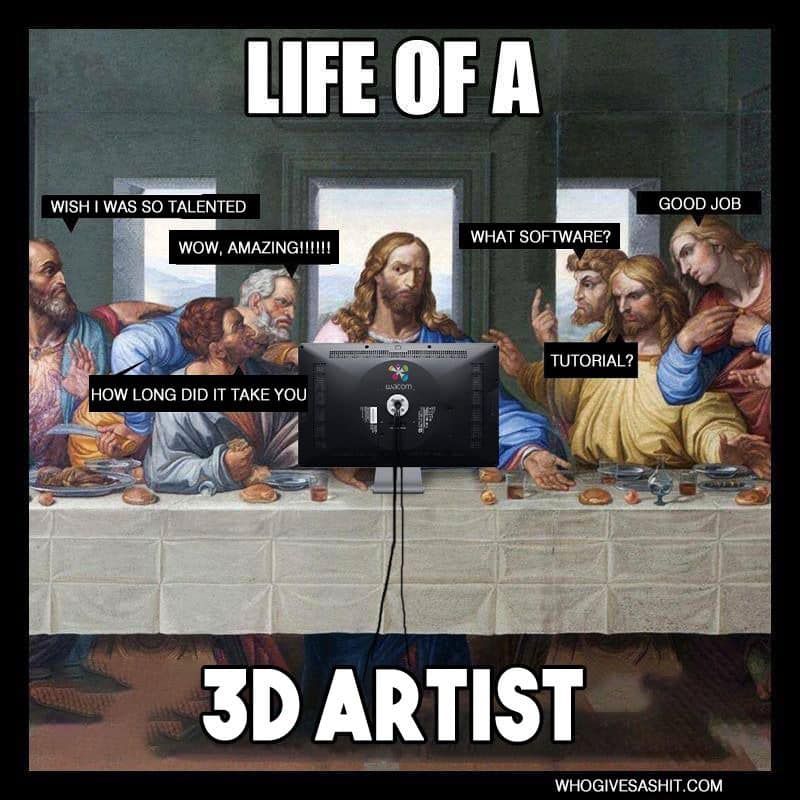
Introduction
3D modeling is no longer just a part of animated movies or video games — it has become a vital tool across industries like architecture, product design, healthcare, and even education. Whether you’re visualizing a futuristic building, designing a new car, or recreating human anatomy for research, 3D modeling plays a critical role. This blog dives into everything you need to know about 3D modeling — its origins, how the market is growing, the essential skills needed, career paths, and how to get started.
The Evolution of 3D Modeling
3D modeling has its roots in early geometry and mathematical theory, but its digitized form began taking shape during the 1960s with the development of computer graphics. Starting as a tool for engineers and architects, it quickly evolved into a multidisciplinary asset used in entertainment, manufacturing, and medicine. Today, software advancements allow artists and designers to create incredibly lifelike models, environments, and simulations with ever-increasing precision and creativity.
Growing Demand & Market Potential
The 3D modeling industry is booming as technology blends deeper into our daily lives. From highly realistic video games to architectural walkthroughs and virtual product prototypes, 3D technology is everywhere.
Driving factors behind this growth include:
- The rise of virtual and augmented reality
- Growth in game development, animation, and VFX
- Advancements in AI-driven modeling tools
- Increased use in industrial design and 3D printing
- Smart cities and digital twins in urban planning
With industries turning digital-first, companies are investing more in 3D visualization and prototyping, making this skill more valuable than ever before.
Key Skills & Technical Knowledge

To start or grow in the 3D modeling field, a range of creative and technical skills are required. Here’s a breakdown of the most essential ones:
1. Software Proficiency
- Blender (Free and powerful)
- Autodesk Maya / 3ds Max
- Cinema 4D
- ZBrush (for sculpting)
- Houdini (for simulations and VFX)
2. Modeling Techniques
- Polygonal modeling
- NURBS and spline modeling
- Digital sculpting
- Retopology and mesh optimization
3. Texturing & UV Mapping
- Seamless texturing
- UV unwrapping and editing
- Use of texture painting tools and procedural maps
4. Lighting & Rendering
- Knowledge of lighting setups for realism
- Use of rendering engines like Cycles, Arnold, V-Ray, or Redshift
- Understanding shadows, materials, and environments
5. Basic Animation (Optional but Valuable)
- Rigging characters
- Keyframe animation
- Object dynamics and physics simulations
Career Opportunities in 3D Modeling
3D modeling offers diverse career paths across various industries. Here are some of the most in-demand roles:
- 3D Generalist
- Character Artist
- Environment Artist
- Product Designer
- Medical or Scientific Illustrator
- Architectural Visualizer
- CAD Designer
- Virtual Reality Developer
You can work in industries like:
- Gaming & Animation
- Film & VFX
- Architecture & Real Estate
- Education & Healthcare
- Automotive & Manufacturing
- Marketing & Advertising
Whether you choose to freelance, work in a studio, or join a corporate design team, 3D modeling provides several high-paying opportunities.
How to Get Started – Courses & Learning Paths
The internet offers incredible resources to help you master 3D modeling from scratch. Here are some great places to begin:
Beginner-Friendly Platforms:
- Udemy: Wide range of affordable and beginner-friendly tutorials
- Coursera: Academic and project-based learning
- Skillshare: Creative courses with short practical lessons
Industry-Level Training:
- CG Spectrum: Industry-Focused mentoring and feedback
- Motion Design School: Excellent for stylized or cinematic modeling
- Gnomon School / Think Tank Training: Advanced training for professional artists
Most courses cover everything from the basics of modeling to texturing, rendering, and environment or character creation. Depending on your goals, you can pick a generalist or specialist path.
Tips for Success in 3D Modeling
- Build a Portfolio Early: Showcase your best work on ArtStation or Behance.
- Practice Daily: The more you model, the better you become.
- Stay Updated: Follow 3D artists, watch tutorials, read blogs, and stay in touch with new trends.
- Join Communities: Be part of forums like Blender Artists, Polycount, or Reddit’s r/3DModeling for feedback and support.
- Experiment Creatively: Don’t just follow tutorials — create your own ideas.
Final Thoughts
3D modeling is one of the most exciting and future-proof skills to learn today. It empowers both artists and engineers to bring ideas to life in stunning detail and realism. With the rise of virtual experiences, smart tech, and visual storytelling, the demand for skilled 3D modelers continues to rise.
If you’re creative, love tech, and are eager to shape the future of design, 3D modeling is your perfect playground.
Ready to jump in? Open a modeling software, pick your first course, and start building your unique 3D universe today.

